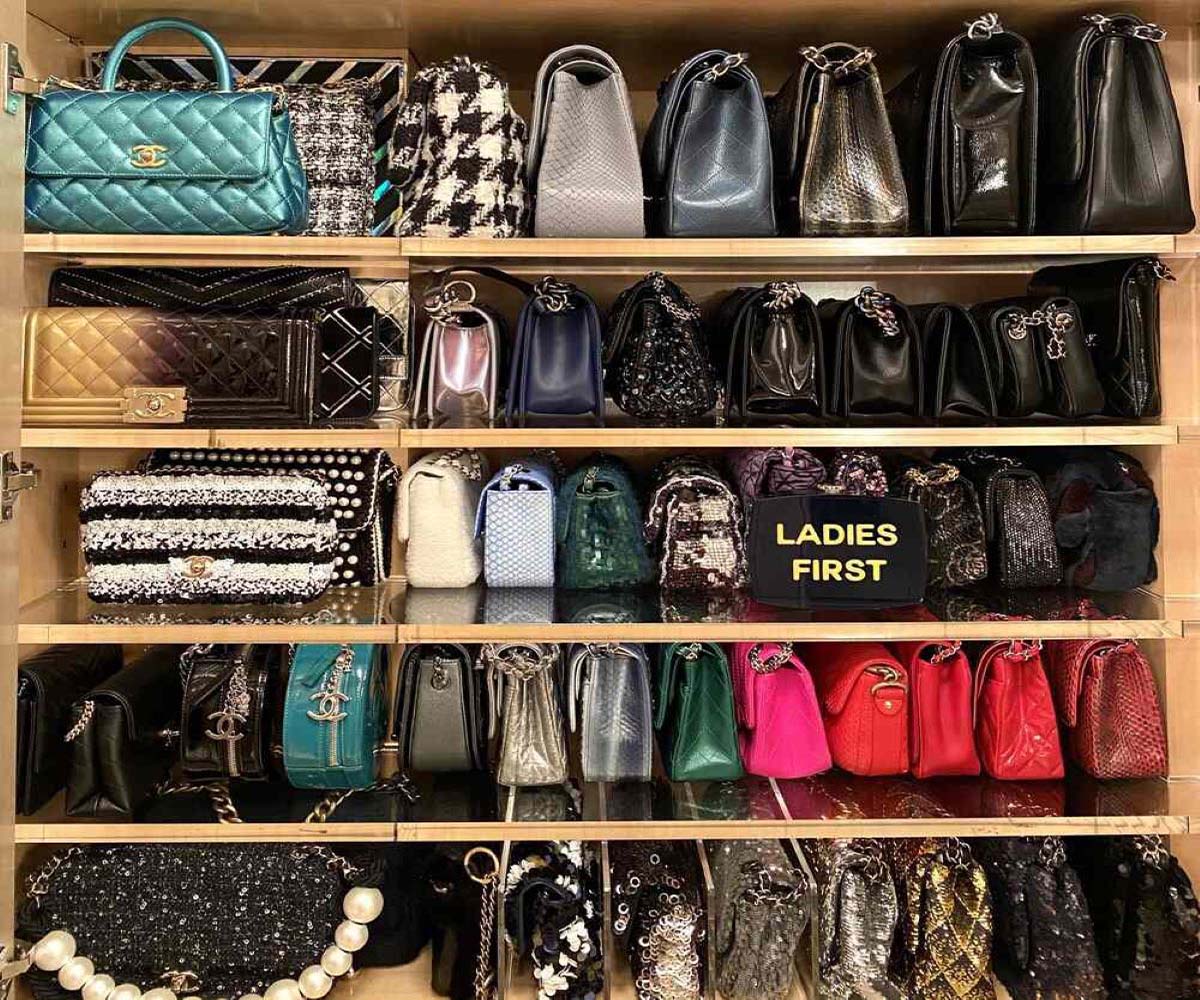

Articles
How To Store Handbags In Closet
Modified: February 24, 2024
Discover the best articles and tips on how to store handbags in your closet. Maximize space and keep your favorite handbags organized with these practical storage solutions.
(Many of the links in this article redirect to a specific reviewed product. Your purchase of these products through affiliate links helps to generate commission for Storables.com, at no extra cost. Learn more)
Introduction
Handbags are not just functional accessories; they are also investments in style and quality. Whether you have a collection of designer handbags or simply adore your everyday purses, storing them properly is essential to maintain their beauty and longevity. By organizing and protecting your handbags in your closet, you can avoid damage from dust, sunlight, and other potential hazards.
In this article, we will provide you with a comprehensive guide on how to store handbags in your closet. We will cover everything from assessing the closet space to sorting and purging your handbag collection, to cleaning and preparing the handbags for storage. We will also discuss choosing the right storage solutions and offer tips for maintaining handbag organization.
So, if you’re ready to keep your beloved handbags in pristine condition and create a clutter-free closet, let’s dive into the world of handbag storage!
Key Takeaways:
- Protect your handbag investment by assessing closet space, purging unused items, and choosing the right storage solutions. Maintain organization and cleanliness to ensure your handbags remain in prime condition for years to come.
- Tailor your storage approach to different handbag types, from crossbody bags to leather totes. By following specific care tips, you can preserve the quality of each handbag and enjoy a well-organized, stylish closet.
Read more: How To Store Designer Handbags In Closet
Assessing the Closet Space
Before you start storing your handbags in your closet, it’s important to assess the available space and determine the best storage strategy. Here are a few key factors to consider:
- Closet size: Take note of the dimensions of your closet, including width, height, and depth. This will give you an idea of how much space you have to work with and help you plan the layout of your handbag storage.
- Accessible space: Identify the areas of your closet that are easily accessible and where you can conveniently store your handbags. This could include shelves, hanging rods, or even the floor space.
- Lighting: Consider the lighting situation in your closet. Direct sunlight can fade the color of your handbags over time, so try to choose storage solutions that shield your bags from excessive light exposure.
- Climate control: Assess the climate in your closet. Extreme temperature changes or high humidity levels can damage your handbags. If your closet is not climate-controlled, consider using moisture-absorbing products or dehumidifiers to protect your bags.
- Existing storage solutions: Take note of any shelves, hanging organizers, or other storage solutions already present in your closet. Determine how you can maximize their use or if you need to invest in additional storage options.
- Types of handbags: Finally, consider the types of handbags you own and their sizes. Some handbags, such as clutches or mini bags, may require different storage solutions compared to larger totes or shoulder bags.
By assessing these factors, you can create an efficient storage plan that optimizes the available space and ensures your handbags are easily accessible and well-protected.
Sorting and Purging Handbags
Before you start storing your handbags in your closet, it’s a good idea to sort through your collection and purge any items that you no longer use or need. This will help declutter your space and make room for the handbags you truly love and use. Here are some steps to follow:
- Empty your closet: Take out all your handbags from the closet and lay them out on a clean surface. This will give you a clear view of your collection and make it easier to sort through.
- Assess each handbag: Go through each handbag one by one and evaluate its condition and usefulness. Ask yourself if you still love and use the bag, if it’s in good condition, and if it fits your current style or needs.
- Sort into categories: Create categories based on your sorting criteria. For example, you can have categories like “Keep,” “Donate/Sell,” and “Repair.” Sort each handbag into the appropriate category.
- Donate, sell, or repair: Once you have identified the handbags you no longer want to keep, decide whether you want to donate them to a charity organization, sell them online, or maybe have them repaired if they just need a minor fix.
- Clean the handbags: Before storing the handbags you wish to keep, make sure to clean them properly. Follow the manufacturer’s instructions or use suitable cleaning products for different materials. This will help remove any dirt or stains and keep your handbags in good condition.
- Consider sentimental value: Remember that not all decisions about your handbag collection are purely based on practicality. Some handbags may have sentimental value to you, and even if you don’t use them frequently, you may want to keep them for sentimental reasons.
By sorting and purging your handbags, you can create a curated collection that reflects your style, declutter your space, and make it easier to store and organize your bags in your closet.
Cleaning and Preparing Handbags for Storage
Before you place your handbags in storage, it’s important to clean and prepare them properly. This will help maintain their condition and prevent any damage during the storage period. Here are some steps to follow:
- Empty the contents: Remove any items from the pockets or compartments of your handbags. Check for loose change, receipts, or any other items that may have accumulated over time.
- Remove dust and debris: Use a soft-bristle brush or a clean microfiber cloth to gently brush off any dust or debris from the surface of your handbags. Pay attention to the seams, crevices, and hardware.
- Spot clean if necessary: If there are any noticeable stains or spills on your handbags, spot clean them using appropriate cleaning methods and products. Always test a small, inconspicuous area first to ensure the cleaning solution doesn’t damage the material.
- Treat leather and suede: If you have leather or suede handbags, consider using a leather conditioner or suede protector to nourish and protect the material. Follow the instructions on the product and allow sufficient drying time.
- Stuff with tissue paper: To maintain the shape of your handbags, stuff them with acid-free tissue paper or bubble wrap. This will help prevent any creasing or sagging of the bag’s structure.
- Protect the hardware: Cover any metal hardware, such as buckles or chains, with acid-free tissue paper or cloth. This will help prevent any scratching or tarnishing during storage.
- Use dust bags or pillowcases: Place your handbags in individual dust bags or pillowcases to protect them from dust and light exposure. If you don’t have dust bags, you can use cotton pillowcases or fabric pouches as an alternative.
- Label the bags: Consider labeling each dust bag or pillowcase with the name or photo of the handbag inside. This will make it easier to identify and locate specific handbags when you need them.
By cleaning and preparing your handbags for storage, you can ensure that they remain in excellent condition and are ready to be used whenever you retrieve them from your closet.
Choosing the Right Storage Solutions
Once you have assessed your closet space and prepared your handbags for storage, it’s time to select the right storage solutions to keep your handbags organized and protected. Here are some factors to consider when choosing the ideal storage solutions:
- Shelving: If you have ample shelf space in your closet, consider using sturdy, adjustable shelves to store your handbags. Arrange them in a neat, organized manner, with larger bags on the bottom and smaller ones on top.
- Hanging organizers: Hanging organizers, such as purse racks or over-the-door organizers with clear pockets, are great options for easily accessing your handbags. They maximize vertical space and allow you to see each bag without digging through a pile.
- Cubbies or dividers: Use cubbies or dividers to create dedicated compartments for each handbag. This method keeps them separate, prevents them from tangling or scratching one another, and makes it easier to find the specific bag you want to use.
- Drawer inserts: For smaller handbags or clutches, consider using drawer inserts or dividers to create separate compartments within a drawer. This method keeps the bags upright and prevents them from getting squished or damaged.
- Acrylic or fabric dust covers: Individual dust covers are an excellent option for protecting your handbags from dust and light. They come in both acrylic and fabric options and provide a clear view of the bags for quick identification.
- Stand or display hooks: If you have space in your closet, you can invest in standing racks with hooks or display hooks to showcase your favorite handbags. This not only adds a stylish touch but also keeps your bags easily accessible and in view.
- Under-bed storage: If your closet space is limited, consider utilizing under-bed storage options. Sturdy, breathable storage containers or vacuum-sealed bags can be used to store your handbags conveniently and protect them from dust.
- Climate-controlled storage: If you have valuable or delicate handbags that require extra protection, you may consider renting a climate-controlled storage unit specifically designed to preserve the condition of your bags. These units regulate temperature and humidity levels to prevent damage.
When selecting the right storage solutions, take into consideration the size and quantity of your handbags, the available closet space, and your personal preferences for organizing and displaying them.
Remember, the goal is to store your handbags in a way that preserves their condition, keeps them easily accessible, and showcases their beauty when you open your closet door.
Read more: How To Store Handbags
Storing Handbags Properly
Now that you have chosen the right storage solutions for your handbags, it’s time to learn how to store them properly to maintain their shape and condition. Follow these guidelines to ensure your bags are stored safely:
- Arrange by size and shape: When placing your handbags in shelves or cubbies, arrange them by size and shape. Nest larger bags inside smaller ones to save space and keep the structure intact.
- Store upright: Whenever possible, store your handbags in an upright position. This prevents them from sagging or losing their shape over time. If a bag doesn’t stand upright on its own, use tissue paper or bubble wrap to prop it up.
- Fill empty spaces: If there are gaps between your handbags, fill them with soft items like scarves or small pillows to maintain even pressure and prevent the bags from collapsing or losing their form.
- Keep similar bags together: Group handbags with similar shapes, styles, or colors together. This makes it easier to locate specific bags and maintains an organized look in your closet. You can also consider categorizing them by occasion, such as work bags, evening bags, or travel bags.
- Avoid overcrowding: Avoid cramming too many handbags into one storage space. Overcrowding can cause wrinkles, creases, and damage to the straps or handles. Leave enough breathing room for each bag, allowing them to hang freely.
- Rotate the selection: To prevent your handbags from developing permanent creases or wear in the same areas, rotate the selection periodically. This allows each bag to have a chance to be used and aired out, keeping them in optimal condition.
- Protect delicate materials: If you have handbags made of delicate materials such as satin or silk, take extra care to protect them. Wrap them in acid-free tissue paper or fabric pouches to shield them from potential snags or damage.
- Check periodically: Regularly inspect your handbags for any signs of damage, such as mold, mildew, or pest infestation. Taking preventative measures and catching issues early can save your handbags from irreparable harm.
By storing your handbags properly, you can ensure that they retain their shape, condition, and beauty over time. It also makes it easier for you to find and appreciate your collection whenever you want to switch up your style.
Maintaining Handbag Organization
Keeping your handbags organized in your closet is not a one-time task. It requires ongoing effort to maintain the organization and ensure your collection stays in order. Here are some tips to help you maintain handbag organization:
- Put items back in their designated places: After using a handbag, make it a habit to return it to its designated storage space. Avoid leaving bags lying around or piling them on top of each other, as this can lead to disorganization and potential damage.
- Regularly assess your collection: Periodically review your handbag collection to ensure it aligns with your current style and needs. If you find any bags that no longer serve a purpose, consider donating or selling them to maintain a curated and clutter-free collection.
- Rotate the selection: Rotate your handbags regularly to give equal use to all of them. This prevents certain bags from being neglected and ensures that each bag gets proper airing and attention.
- Follow a “one in, one out” rule: To prevent your collection from becoming overwhelming, implement a rule where you add a new handbag to your closet only if you are willing to let go of an existing one. This helps keep your collection manageable and prevents overcrowding.
- Maintain cleanliness: Regularly clean your handbags to remove any dust, dirt, or stains that may accumulate. Follow the care instructions for each bag’s specific material to avoid damaging them during the cleaning process.
- Inspect for storage issues: Periodically check your storage solutions for any signs of wear or damage. Replace any worn-out dust covers, hooks, or dividers to ensure your handbags remain properly protected.
- Label and categorize: If you have a large handbag collection, consider using labels or tags to identify each bag’s contents or purpose. Categorizing them by style, color, or occasion can also help you locate specific bags quickly.
- Store seasonally: If you have seasonal handbags, such as lightweight totes for summer or cozy purses for winter, rotate them in and out of your main collection depending on the season. This helps keep your closet clutter-free and ensures you have the right bags on hand for each time of year.
By implementing these practices, you can maintain the organization and pristine condition of your handbag collection. A well-organized closet not only makes it easier to find and use your handbags but also enhances the overall aesthetic and functionality of your space.
To store handbags in a closet, use shelf dividers to keep them upright and maintain their shape. Stuff them with tissue paper to help them keep their form and store them in dust bags to protect them from dust and light.
Tips for Storing Specific Types of Handbags
While the general principles of handbag storage apply to various types of handbags, certain types may require specific care and attention. Here are some tips for storing specific types of handbags:
Crossbody Bags and Shoulder Bags
For crossbody bags and shoulder bags, it’s best to store them with their straps or chains tucked inside the bag to prevent tangling or stretching. You can stuff them with tissue paper or bubble wrap to maintain their shape and keep them upright. If possible, store them on a shelf or in a cubby instead of hanging to avoid strain on the straps.
Read more: How To Store Designer Handbags
Clutch Bags and Evening Bags
Clutch bags and evening bags are often smaller in size and delicate in nature. To protect them, store them individually in fabric pouches or small dust bags to prevent scratching or discoloration. Avoid placing heavy items on top of these bags, as it can compromise their structure. Consider storing them in a drawer with dividers or in a small box to keep them neatly organized and easily accessible.
Tote Bags and Beach Bags
Tote bags and beach bags are generally larger and more flexible in structure. To maintain their shape, stuff them with tissue paper or bubble wrap and place them in an upright position. If possible, hang them on sturdy hooks or racks to prevent them from sagging. Avoid overstuffing these bags, as it can strain the handles or cause them to lose their structural integrity.
Structured Bags and Satchels
Structured bags and satchels are known for their distinct shapes and defined structures. These bags should be stored upright to maintain their form. You can stuff them with tissue paper or bubble wrap to prevent them from collapsing or losing their shape. Store them on shelves or in compartments where they can stand securely without any pressure on their sides.
Leather Bags and Exotic Skin Bags
Leather bags and bags made from exotic skins require extra care to preserve their quality. It’s important to avoid storing them in humid or excessively dry environments, as it can damage the leather or skins. Use leather conditioners or treatments specifically designed for these materials to keep them moisturized and supple. Store them in a cool, dry place away from direct sunlight to prevent fading or discoloration.
Remember, regardless of the type of handbag, regular cleaning and maintenance are always essential to keep them in good condition. By following these tips, you can ensure that each type of handbag receives the proper care and attention it deserves during storage.
Read more: How To Store Handbags Properly
Conclusion
Properly storing your handbags in your closet is not only practical but also necessary to protect these valuable fashion accessories. By following the guidelines and tips provided in this article, you can ensure that your handbags remain in excellent condition and are easily accessible whenever you need them.
Assessing your closet space, sorting and purging your handbag collection, and cleaning and preparing the handbags for storage are the crucial first steps. Choosing the right storage solutions, such as shelves, hanging organizers, or drawer inserts, is essential for maintaining organization and protecting your bags.
Storing your handbags properly by arranging them by size and shape, keeping them upright, and avoiding overcrowding, helps to maintain their shape and structure. Regularly maintaining the organization and cleanliness of your handbag collection, as well as inspecting your storage solutions, ensures that your bags remain in prime condition.
Specific types of handbags, such as crossbody bags, clutch bags, tote bags, and leather bags, may require additional care and attention during storage. Taking these specific needs into consideration will help preserve the quality of each handbag.
By consistently applying these storage principles and maintaining your handbag collection with care, you can enjoy using and showcasing your handbags for years to come. Not only will your handbags remain in excellent condition, but your closet will also be transformed into an organized and stylish space.
So, take the time to assess your closet space, prepare and clean your handbags, choose suitable storage solutions, and maintain organization. Your handbags deserve the care and attention you give them, and with proper storage, you can keep them looking fabulous and ready to elevate any outfit.
Frequently Asked Questions about How To Store Handbags In Closet
Was this page helpful?
At Storables.com, we guarantee accurate and reliable information. Our content, validated by Expert Board Contributors, is crafted following stringent Editorial Policies. We're committed to providing you with well-researched, expert-backed insights for all your informational needs.
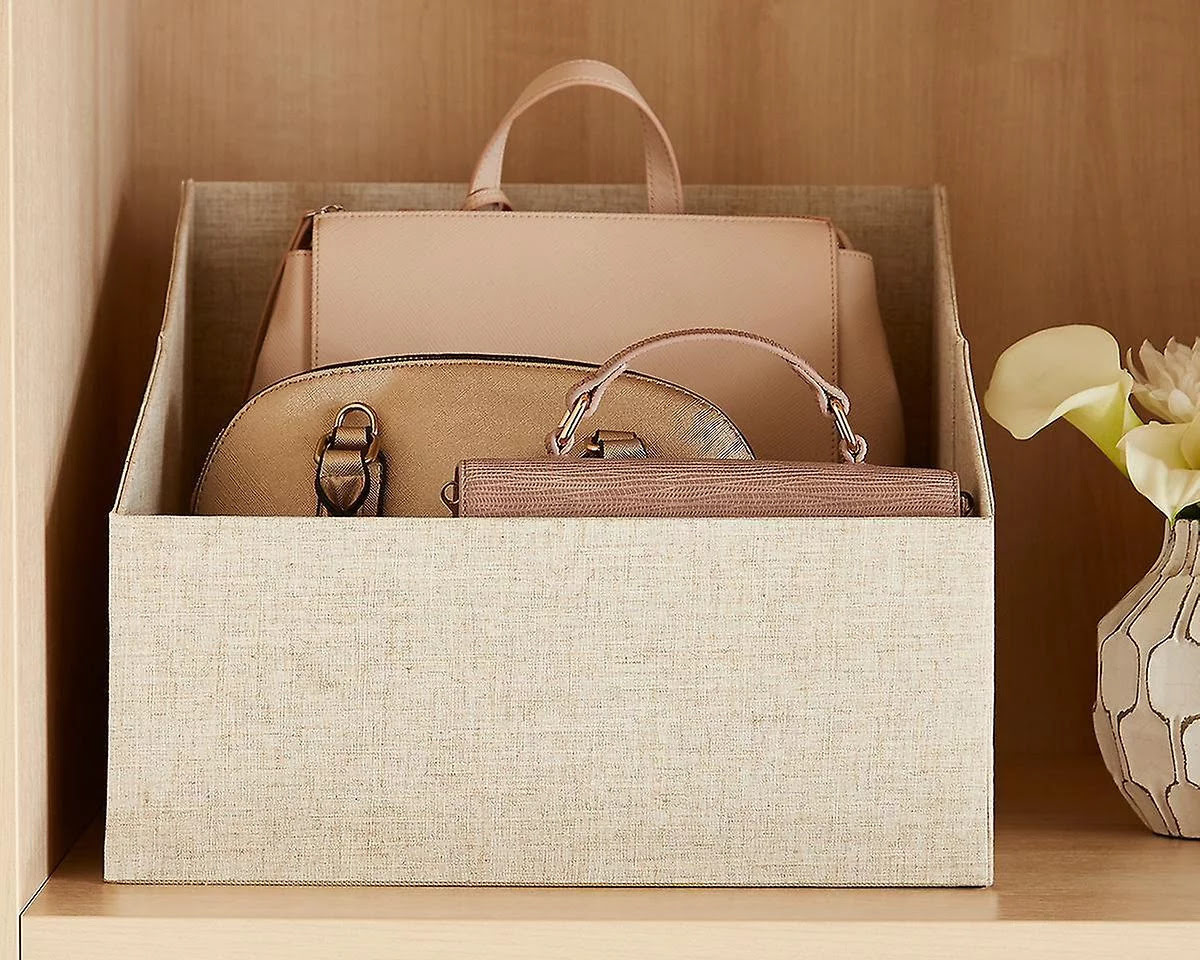


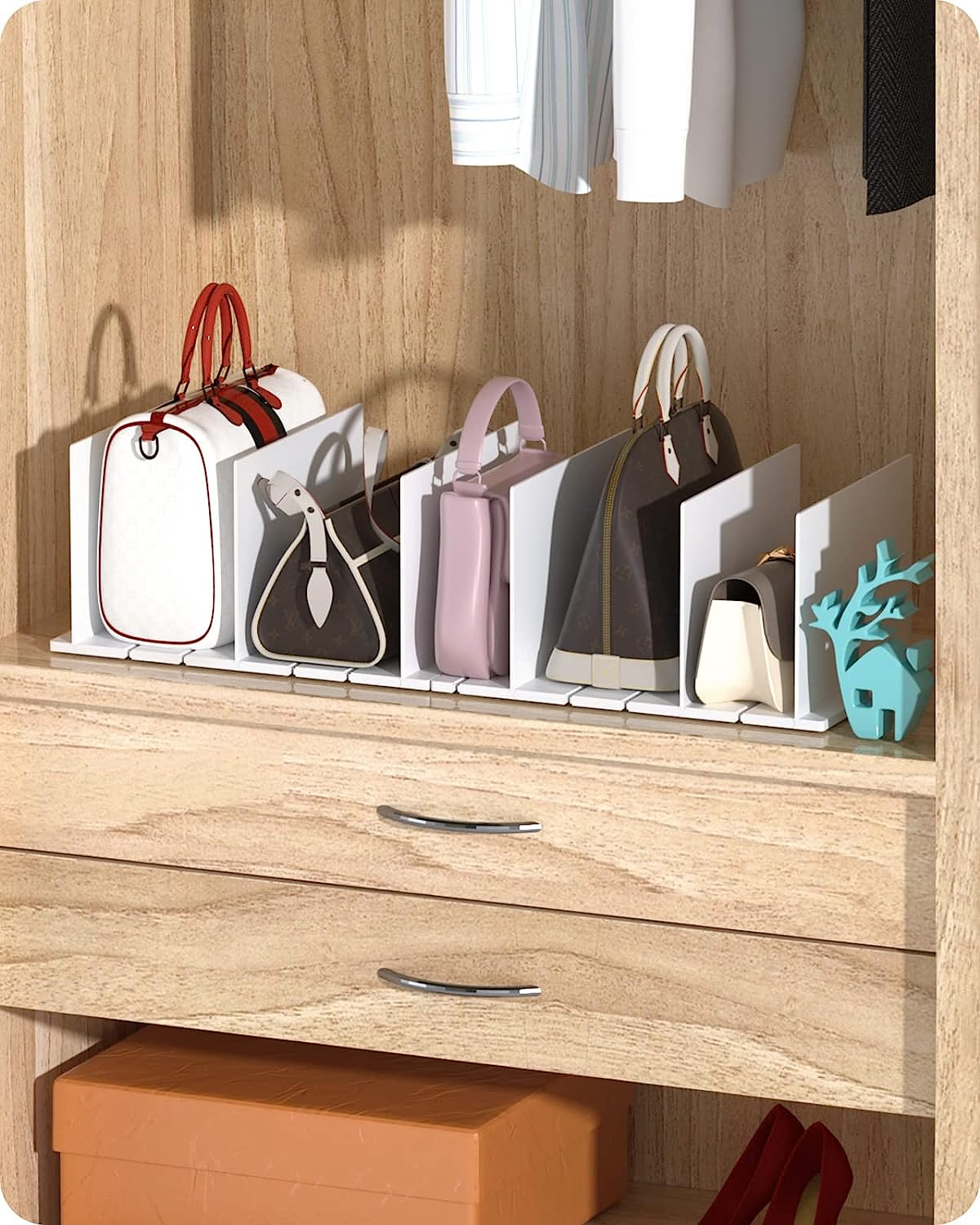
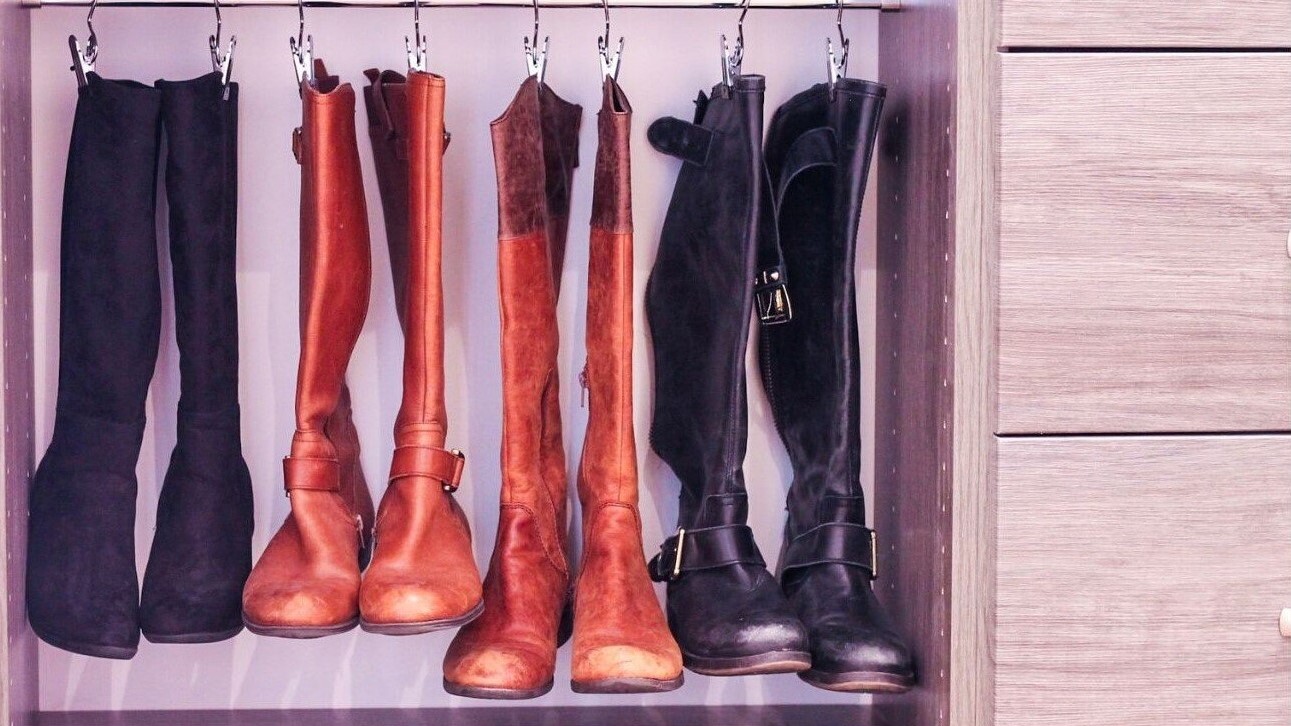
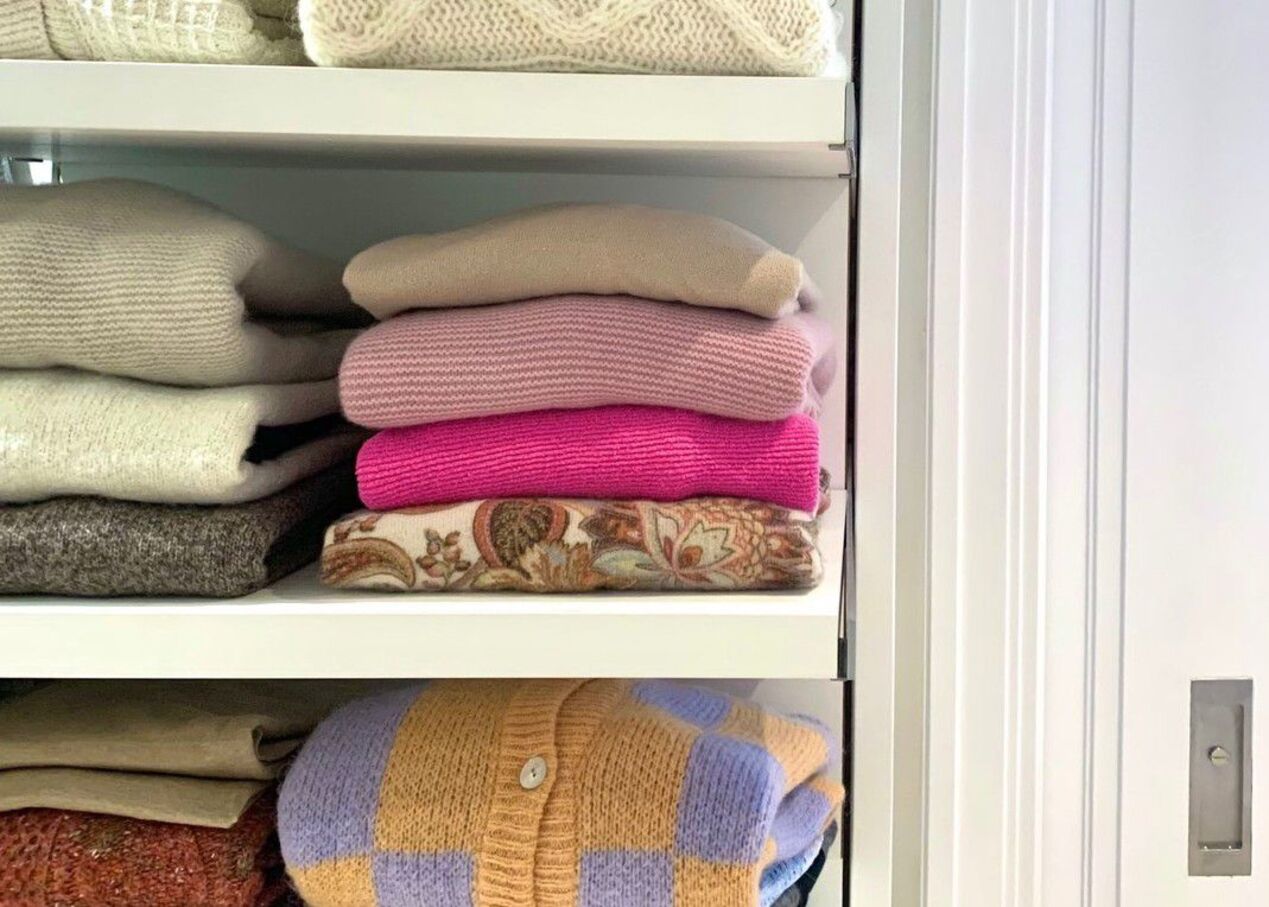

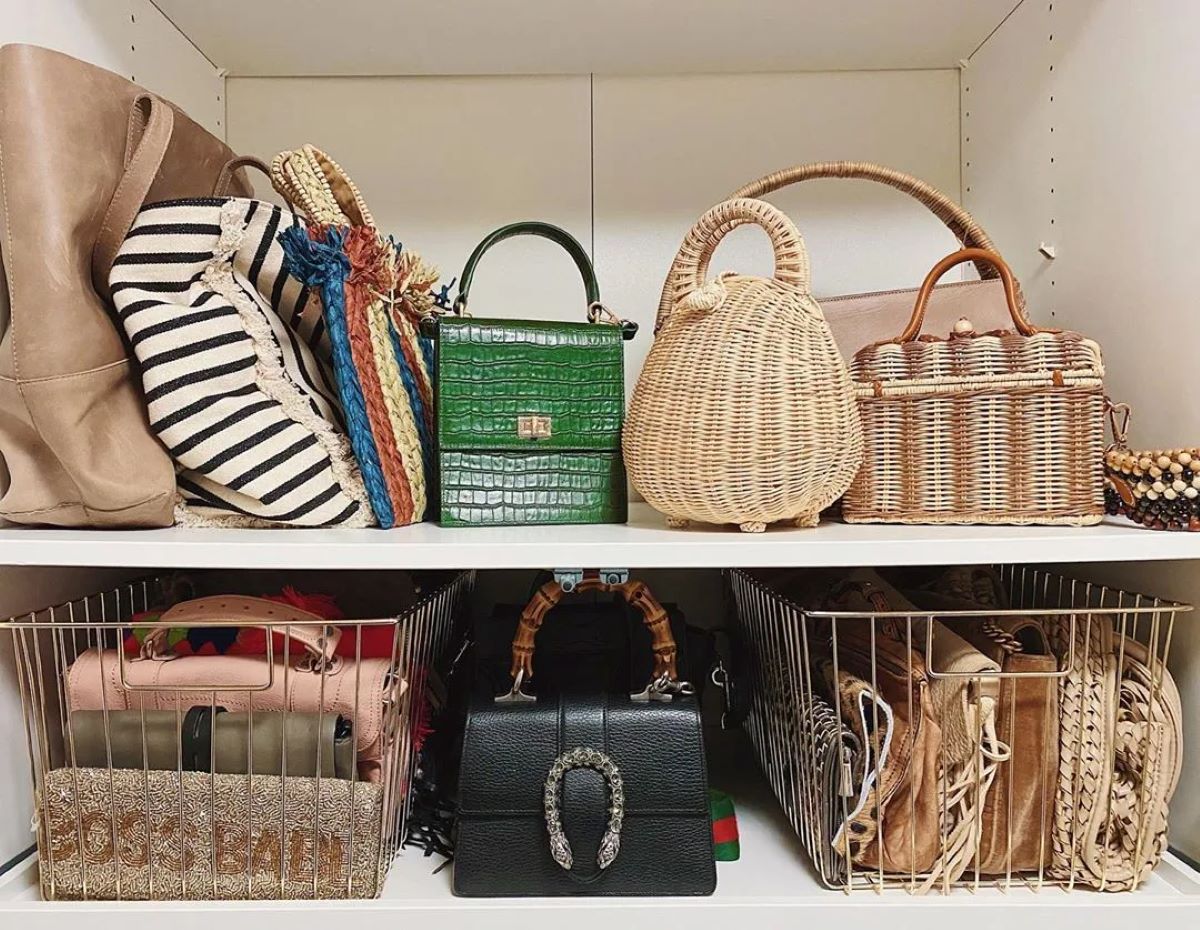


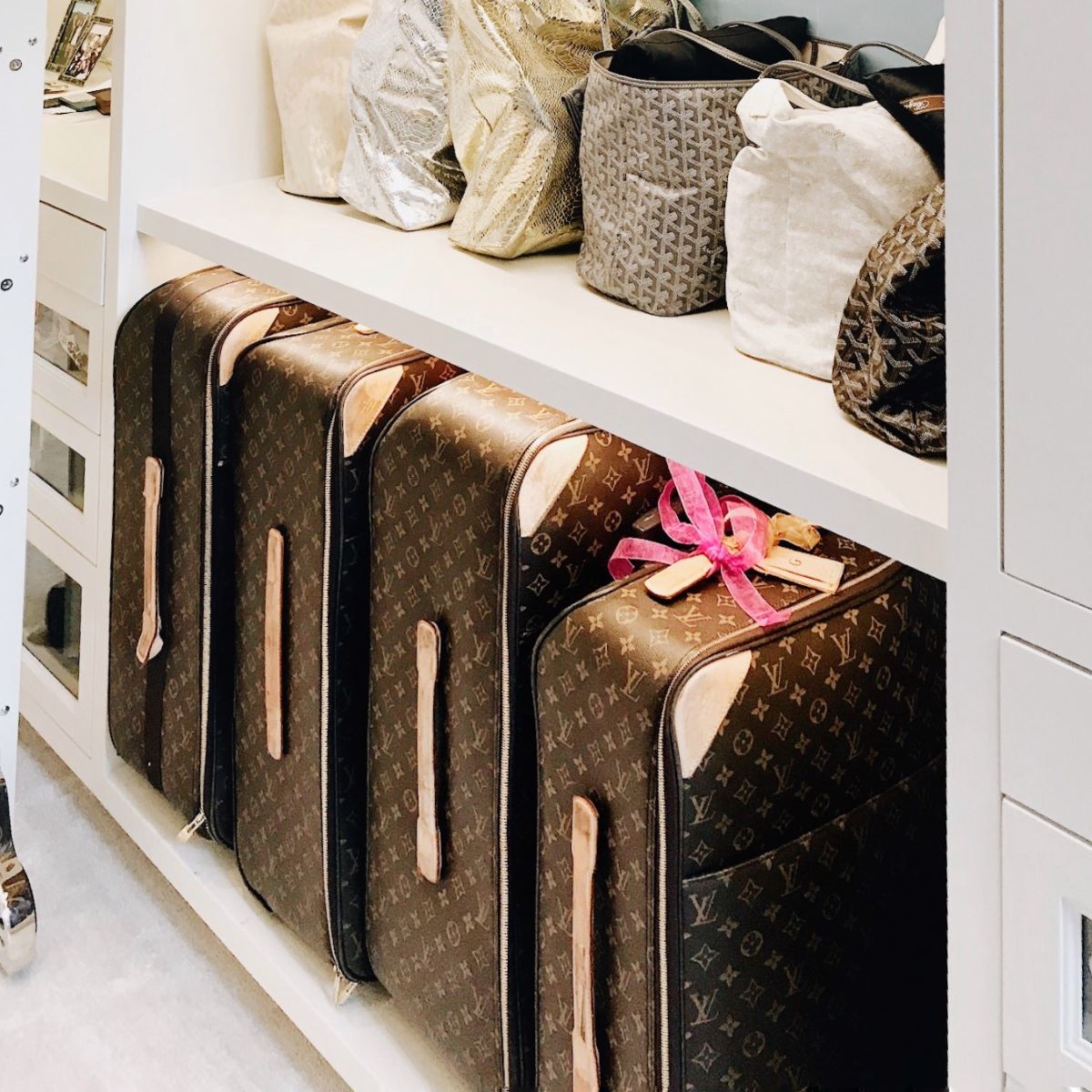


0 thoughts on “How To Store Handbags In Closet”